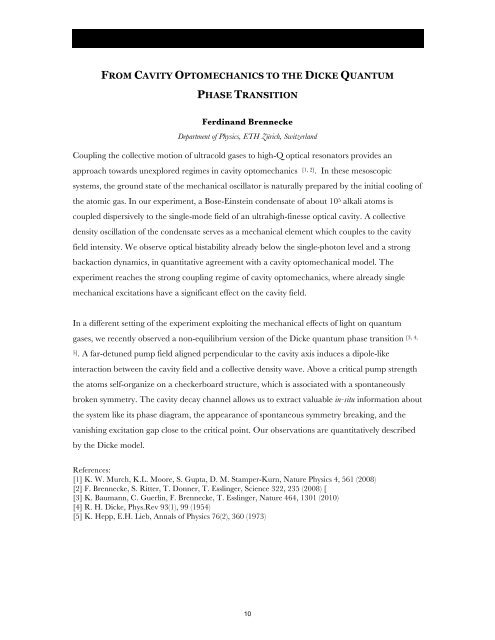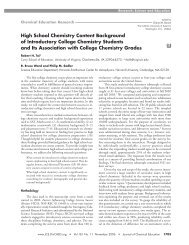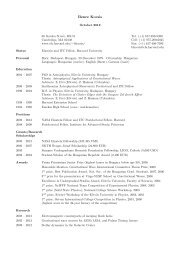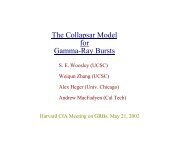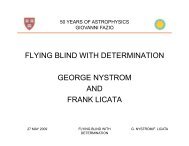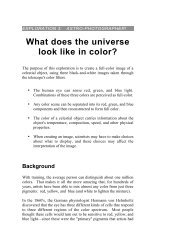Index OMC_final - Harvard University
Index OMC_final - Harvard University
Index OMC_final - Harvard University
Create successful ePaper yourself
Turn your PDF publications into a flip-book with our unique Google optimized e-Paper software.
FROM CAVITY OPTOMECHANICS TO THE DICKE QUANTUM<br />
PHASE TRANSITION<br />
Ferdinand Brennecke<br />
Department of Physics, ETH Zürich, Switzerland<br />
Coupling the collective motion of ultracold gases to high-Q optical resonators provides an<br />
approach towards unexplored regimes in cavity optomechanics [1, 2]. In these mesoscopic<br />
systems, the ground state of the mechanical oscillator is naturally prepared by the initial cooling of<br />
the atomic gas. In our experiment, a Bose-Einstein condensate of about 10 5 alkali atoms is<br />
coupled dispersively to the single-mode field of an ultrahigh-finesse optical cavity. A collective<br />
density oscillation of the condensate serves as a mechanical element which couples to the cavity<br />
field intensity. We observe optical bistability already below the single-photon level and a strong<br />
backaction dynamics, in quantitative agreement with a cavity optomechanical model. The<br />
experiment reaches the strong coupling regime of cavity optomechanics, where already single<br />
mechanical excitations have a significant effect on the cavity field.<br />
In a different setting of the experiment exploiting the mechanical effects of light on quantum<br />
gases, we recently observed a non-equilibrium version of the Dicke quantum phase transition [3, 4,<br />
5]. A far-detuned pump field aligned perpendicular to the cavity axis induces a dipole-like<br />
interaction between the cavity field and a collective density wave. Above a critical pump strength<br />
the atoms self-organize on a checkerboard structure, which is associated with a spontaneously<br />
broken symmetry. The cavity decay channel allows us to extract valuable in-situ information about<br />
the system like its phase diagram, the appearance of spontaneous symmetry breaking, and the<br />
vanishing excitation gap close to the critical point. Our observations are quantitatively described<br />
by the Dicke model.<br />
References:<br />
[1] K. W. Murch, K.L. Moore, S. Gupta, D. M. Stamper-Kurn, Nature Physics 4, 561 (2008)<br />
[2] F. Brennecke, S. Ritter, T. Donner, T. Esslinger, Science 322, 235 (2008) [<br />
[3] K. Baumann, C. Guerlin, F. Brennecke, T. Esslinger, Nature 464, 1301 (2010)<br />
[4] R. H. Dicke, Phys.Rev 93(1), 99 (1954)<br />
[5] K. Hepp, E.H. Lieb, Annals of Physics 76(2), 360 (1973)<br />
10


